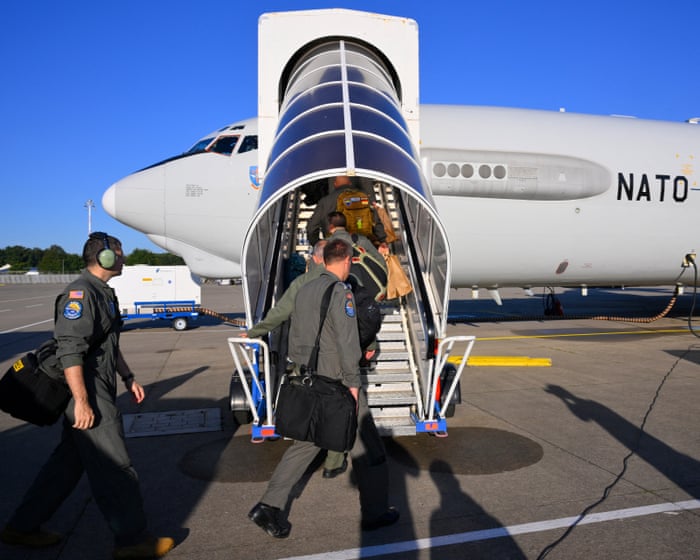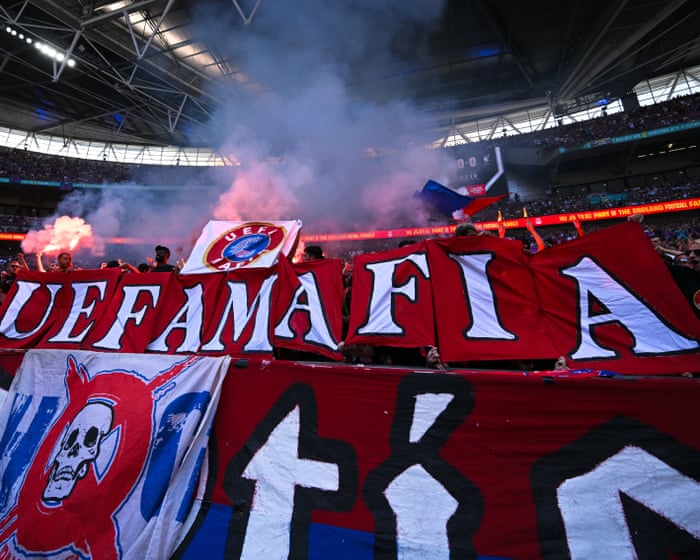Earlier this month, a group of Russian drones crossed into Poland’s airspace, with some being shot down. A few days later, another Russian drone flew over Romania on its way to Ukraine, and Romanian air defenses did not engage it. Then, on September 19, three Russian MiG-31 fighters entered Estonia’s airspace, where Italian F-35s, deployed there for a NATO mission, intercepted and escorted them away.
While Russia has breached NATO airspace before, these recent incidents are notable for their scale and boldness. Such incursions will only stop if the intruders are shot down. Fortunately, downing an occasional Russian fighter jet or drone is unlikely to spark a wider conflict and could even help reduce tensions by clearly marking boundaries.
The Cold War provides valuable insights into handling these situations. Although many believe the superpowers avoided direct clashes by fighting through proxies in the global south, this isn’t entirely accurate. In the early 1950s, Soviet interceptors attacked U.S. aircraft on several occasions, including two over the Baltic Sea. American and Soviet pilots also clashed in the skies over Korea, with casualties on both sides. Later, after the U.S. developed the U-2 spy plane, the Soviets and their allies repeatedly tried to shoot them down.
The most famous incident occurred on May 1, 1960, when Gary Powers’ U-2 was shot down deep inside Soviet territory near Sverdlovsk (now Ekaterinburg). The USSR turned it into a propaganda victory by displaying the wreckage and the captured pilot, but the U.S. did not retaliate. President Eisenhower even halted further U-2 flights over the USSR, recognizing the risks.
Another U-2 was shot down over Cuba on October 27, 1962, known as “Black Saturday” for its potential to escalate during the Cuban Missile Crisis. While reckless at the time, we are not in such a precarious situation today.
Other nations also downed U.S. or allied aircraft. Between 1962 and 1967, China shot down five Taiwanese U-2s. A grave incident took place on April 15, 1969, when North Korea attacked a U.S. EC-121 reconnaissance plane outside its airspace, killing 31 Americans—the deadliest such event for the U.S. Air Force during the Cold War. Still, the U.S. government remained calm.
Similarly, the U.S. did not retaliate militarily when the Soviets shot down a civilian airliner that strayed into their airspace on September 1, 1983, killing 269 people, including a U.S. congressman.
Some might argue that the U.S. showed more restraint than the Soviets, avoiding escalation due to nuclear fears. In reality, both sides were cautious, understanding that while deadly incidents could occur, it was safer to de-escalate after some posturing. Ultimately, their willingness to use force against intruders helped deter each other and prevented the Cold War from spiraling out of control.
NATO should learn from these lessons and be prepared to shoot down intruding Russian aircraft.This is not a step toward war but a necessary precaution to maintain credibility in response to the adversary’s provocations. Both sides engage in psychological tactics to test each other’s resolve. If one crosses unspoken boundaries, it must be held accountable. Failing to do so promptly would signal that those lines can be crossed without consequence, leading to increasingly dangerous situations as the adversary pushes further.
There are established protocols for dealing with enemy aircraft intrusions, designed to manage incidents where an aircraft enters another’s airspace, whether by accident or intent. Many of these procedures were developed during the Cold War as the United States and the Soviet Union worked to reduce the risk of unintended escalation.
Another lesson from that era is that even at the peak of tensions, both sides maintained communication channels. After the Cuban Missile Crisis, a direct hotline was set up between Moscow and Washington to facilitate dialogue between leaders, alongside other backchannels for sensitive negotiations.
As the U.S. shifts its strategic focus away from Europe, it falls to European nations to engage with Russia, including through military contacts. For every hour of public rhetoric—a skill Europeans have mastered—there should be three hours of quiet, behind-the-scenes diplomacy.
However, when diplomacy fails, force becomes necessary. If intruding aircraft do not comply, shooting them down is the logical response. We should not doubt that Russia would do the same if our aircraft entered their airspace, as they have done in the past.
Such actions may temporarily heighten tensions, as seen in November 2015 when Turkey downed a Russian bomber that entered its airspace. Russia initially responded with military posturing and sanctions, but President Putin eventually moved past the incident and reconciled with Turkish President Erdoğan, especially after Turkey expressed regret. Both sides recognized that de-escalation served their interests, and Russia has since avoided military provocations against Turkey, showing a capacity to learn from such encounters.
Putin will continue to test limits, aiming to embarrass NATO and exploit divisions within the West by highlighting differences between eastern flank nations directly threatened by his actions and their more secure allies like Italy, France, and Britain. Despite their more relaxed stance, these allies have deployed fighter aircraft to the region, which may be called upon to demonstrate that Putin’s provocations will not go unanswered.
Sergey Radchenko is the Wilson E. Schmidt Distinguished Professor at the Henry A. Kissinger Center, Johns Hopkins School of Advanced International Studies.
Frequently Asked Questions
Of course Here is a list of FAQs about Russias aggressive actions and NATOs response inspired by the lessons from the Cold War presented in a clear and natural tone
BeginnerLevel Questions
1 What is NATO and what does it do
NATO the North Atlantic Treaty Organization is a military alliance of 32 countries from North America and Europe Its core principle is collective defense meaning an attack on one member is considered an attack on all
2 Why is Russia seen as a threat to NATO
Russias annexation of Crimea in 2014 and its fullscale invasion of Ukraine in 2022 demonstrated a willingness to use military force to redraw borders in Europe which directly challenges the security and stability that NATO is meant to protect
3 What is the main lesson from the Cold War for dealing with Russia
The key lesson is that a firm unified and predictable stance from NATO deters aggression Showing weakness or division can encourage an adversary to take risks
4 What does collective defense mean in simple terms
Its like a pact that says If you pick a fight with one of us you have to fight all of us This makes any potential attacker think twice
5 Has NATO ever used its collective defense clause before
Yes only onceafter the terrorist attacks on the United States on September 11 2001 NATO allies sent troops and support to the war in Afghanistan
IntermediateLevel Questions
6 How is the current situation different from the Cold War
During the Cold War the world was divided into two clear blocs Today the threat is more about hybrid warfarea mix of cyberattacks disinformation and economic pressure alongside conventional military forcefrom a single major power Russia
7 What are some specific aggressive actions Russia has taken against NATO
Beyond invading Ukraine Russia engages in frequent military provocations such as violating NATO airspace with fighter jets conducting disruptive naval exercises near allied waters and running largescale disinformation campaigns to sow division within member countries
8 How should NATO react according to the lessons of the Cold War
NATO should focus on three things 1




